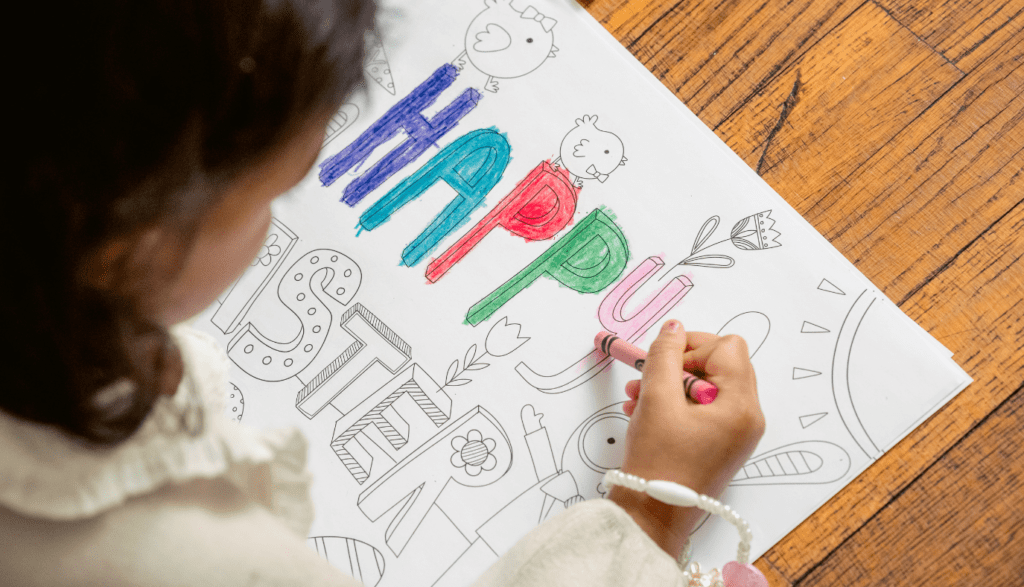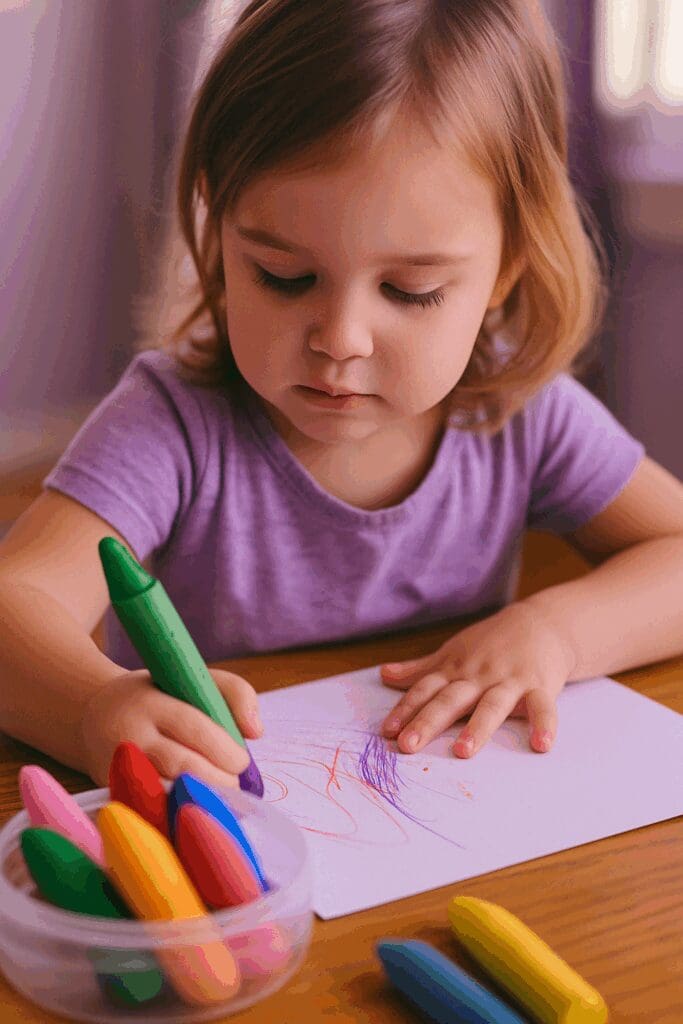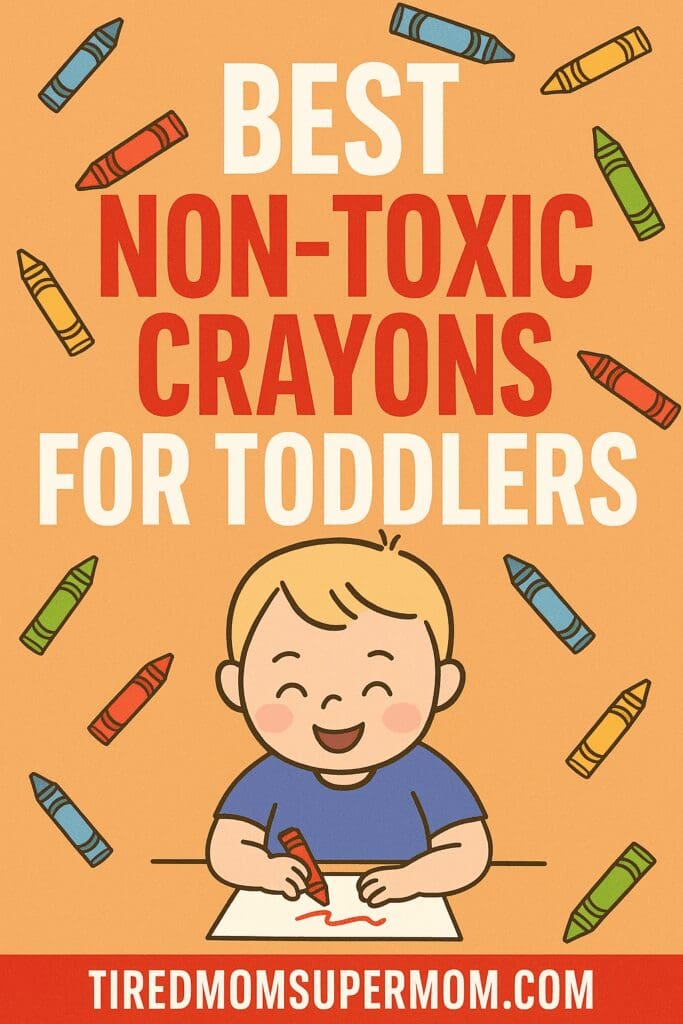🖍️ Best Non-Toxic Crayons for Toddlers in 2025 (Safe & Eco-Friendly Picks)
Choosing the right crayons for your toddler is more than just about colors—it’s about safety, sustainability, and fostering creativity.
When my youngest started coloring, I became obsessed with finding crayons that were safe if she decided to take a bite (because let’s be honest — everything goes into a toddler’s mouth!). After trying a few brands, I found a handful that really gave me peace of mind.
Heads up: This post may include affiliate links. As an Amazon Associate, I earn from qualifying purchases—at no extra cost to you. Full privacy policy and disclosure here.

🌿 Why Choose Non-Toxic Crayons for Toddlers?
Toddlers are naturally curious and often explore the world by putting objects in their mouths.
Traditional crayons may contain harmful substances like paraffin wax and synthetic dyes.
Opting for non-toxic crayons made from natural ingredients like beeswax or soy wax ensures your child’s safety and promotes environmental sustainability.

🏆 Top Non-Toxic Crayons for Toddlers
1. Honeysticks 100% Pure Beeswax Crayons
- Material: 100% pure New Zealand beeswax with food-grade pigments
- Features: Thick, easy-to-hold design; natural scent; virtually unbreakable
- Age Range: 1 year and up
- Price: $22.95 for a 12-pack
- Buy Now: Amazon
These crayons are handmade in New Zealand and are free from paraffin wax and fillers, making them a top choice for eco-conscious parents.
When shopping for art supplies for young children, it’s important to look for crayons that meet safety standards. According to the Environmental Working Group, choosing non-toxic, certified products can help reduce exposure to harmful chemicals. It’s always a good idea to double-check labels for certifications before purchasing.
2. Lebze Jumbo Crayons
- Material: Non-toxic natural wax
- Features: Easy-to-hold jumbo size; vibrant colors; smooth application
- Age Range: 2 years and up
- Price: $16.90 for a 16-pack
- Buy Now: Amazon
Lebze crayons are designed for toddlers, offering a comfortable grip and bright colors to inspire creativity.
3. Crayon Rocks
- Material: Soy wax and natural mineral pigments
- Features: Ergonomic pebble shape; promotes tripod grip; vibrant colors
- Age Range: 3 years and up
- Price: $9.99 for a 16-pack
- Buy Now: Amazon
Developed by a special education teacher, Crayon Rocks are designed to strengthen fine motor skills while being safe and eco-friendly.
4. Wee Can Too Veggie Crayons
- Material: Organic fruit and vegetable powders; soy wax
- Features: Edible ingredients; square shape for easy grip; natural colors
- Age Range: 6 months and up
- Price: $29.99 for a 5-pack
- Buy Now: Amazon
Perfect for the youngest artists, these crayons are safe enough to eat and come in fun, natural colors derived from real fruits and vegetables.
5. Eco-Kids Beeswax Crayons
- Material: Beeswax, soy wax, and stearic acid
- Features: Triangular shape to prevent rolling; handmade in the USA; natural pigments
- Age Range: 2 years and up
- Price: $5.97 for a 20-pack
- Buy Now: Amazon
Eco-Kids crayons offer a sustainable and safe coloring option, with a unique shape that helps develop proper grip.
The FDA reminds parents that art materials, including crayons, should be clearly labeled as non-toxic and meet safety standards to ensure they are safe for children to use. Always check for credible certifications when choosing crayons for toddlers.
📊 Comparison Table: Non-Toxic Crayons for Toddlers
| Brand | Material | Age Range | Features | Price |
|---|---|---|---|---|
| Honeysticks | Beeswax, food-grade pigments | 1+ years | Thick design, natural scent | $22.95 |
| Lebze | Natural wax | 2+ years | Jumbo size, vibrant colors | $16.90 |
| Crayon Rocks | Soy wax, mineral pigments | 3+ years | Ergonomic shape, promotes tripod grip | $9.99 |
| Wee Can Too | Organic fruits/veggies, soy wax | 6+ months | Edible ingredients, square shape | $29.99 |
| Eco-Kids | Beeswax, soy wax, stearic acid | 2+ years | Triangular shape, handmade in USA | $5.97 |
🧠 What to Look for in Non-Toxic Crayons (continued)
When selecting the best non-toxic crayons for toddlers, consider the following factors:
✅ Ingredients
Look for crayons made from natural materials like beeswax, soy wax, or veggie-based pigments. Avoid paraffin wax, synthetic dyes, and petroleum byproducts.
✅ Shape & Grip
Younger toddlers do best with chunky, easy-to-grip crayons. Triangular or pebble shapes promote proper hand development and reduce rolling off the table.
✅ Washability
Toddlers make messes! Choose washable crayons that clean easily from walls, clothes, and skin with just soap and water.
✅ Safety Certifications
Look for labels like:
- ASTM D-4236 – Ensures art materials are non-toxic.
- EN71 – European safety standard for toy materials.
✅ Eco-Friendly Packaging
If sustainability matters to your family, go for brands that use recyclable or biodegradable packaging and cruelty-free production.
❓ FAQ: Non-Toxic Crayons for Toddlers
Are non-toxic crayons really safe to eat?
While labeled non-toxic, crayons aren’t meant to be eaten. Brands like Wee Can Too use edible ingredients, but supervision is still recommended.
What age should my toddler start using crayons?
Many toddlers begin scribbling around 12 to 18 months with large, easy-to-grip crayons.
Which crayons are best for toddlers who still mouth things?
Look for edible or food-grade options like Wee Can Too or Honeysticks, made from beeswax and organic pigments.
Are Crayola crayons safe for toddlers?
Crayola crayons are labeled non-toxic, but they’re made from paraffin wax, which is petroleum-based. Parents seeking fully natural options may prefer beeswax or soy-based brands.
📚 Related Posts You Might Like
- Essential Minimalist Baby Registry Must-Haves
- Organic Cotton Toddler Underwear – Is It REALLY Better?
- What To Put On Your Eco Friendly Baby Registry
🔗 Helpful External Resources
- American Academy of Pediatrics: Toy Safety
- Consumer Product Safety Commission: Art Material Guidelines
📝 Final Thoughts
Finding the best non-toxic crayons for toddlers doesn’t have to be complicated. Whether your little one is just starting to scribble or already creating masterpieces, the right crayons can encourage creativity safely.
👉 Pin this post so you have the top picks on hand whenever you’re ready to restock your toddler’s art supplies.

